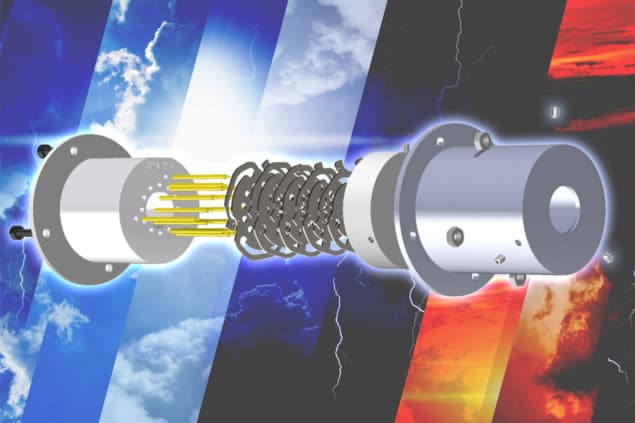
Researchers at Massachusetts Institute of Technology (MIT) have developed a new 3D printing technique that could make it far easier to build detectors for measuring cold, dense plasma in Earth’s upper atmosphere. Javier Izquierdo-Reyes and colleagues hope that their simple, low-cost approach could open up this region of space to a far wider range of research groups.
As the most abundant state of ordinary matter in the universe, plasma is central to a wide array of cutting-edge technical applications: from fusion reactors to advanced material synthesis. One of the best places to measure its unique characteristics is in Earth’s upper atmosphere – where orbiting electrons have been stripped away from their atoms by powerful solar radiation.
Since the 1950s, researchers have used sensors known as “retarding potential analysers” (RPAs) to study this plasma. These detectors contain a stack of negatively-charged electrode meshes, with holes just a few times larger than the electron’s electrostatic influence. By filtering electrons out of the plasma, while allowing larger positive ions to pass through, RPAs allow researchers to directly measure the energy distribution of ions within atmospheric plasma – providing useful insights into its physical properties.
So far, however, RPAs have faced a key limitation. Since the electron’s electrostatic influence increases with temperature, and decreases with density, it becomes far smaller within cold, dense plasma, as is widely found in the upper atmosphere. To filter out these electrons, RPA meshes must contain the smallest possible holes, while maintaining a precise alignment between each mesh.
The detectors attain this alignment through an insulating housing structure for the electrode meshes, which separates them from the RPA’s metal casing. To withstand drastic and unpredictable temperature swings in the upper atmosphere, this housing is typically made from advanced semiconductor materials. However, as RPA meshes become finer, these costly materials must be machined both to a higher precision, and in more intricate shapes – driving up the time, cost and complexity of the manufacturing process.
To overcome this challenge, Izquierdo-Reyes’ team turned to a 3D printing technique named vat polymerization. The approach first involves lowering a platform into a vat of vitrolite resin: a durable glass ceramic that can withstand very high temperatures with good vacuum compatibility. Once the platform is submerged in a layer just 100 µm thick, the team use UV light to cure the resin.

3D printing makes a smaller, lighter cold atom trap
By repeating the process, the researchers could build up RPA housing structures layer by layer. This resulted in a low-cost material that was stronger, smoother and less porous than would be possible with existing ceramic manufacturing processes. In turn, the ceramic was far better suited to withstanding extreme temperature swings.
Having demonstrated the low cost and relative simplicity of their approach, the researchers now envisage a new generation of miniaturized RPAs – which are both better suited than their predecessors to studying cold plasma, and can operate using far less power. If achieved, the sensors could be easily packed onto CubeSats: miniature satellites measuring just 10 cm across, which can be stowed as secondary payloads aboard launch vehicles for other missions. In turn, smaller research groups around the world could soon gain unprecedented opportunity to study plasma in its natural habitat.
The researchers describe their work in Additive Manufacturing.



